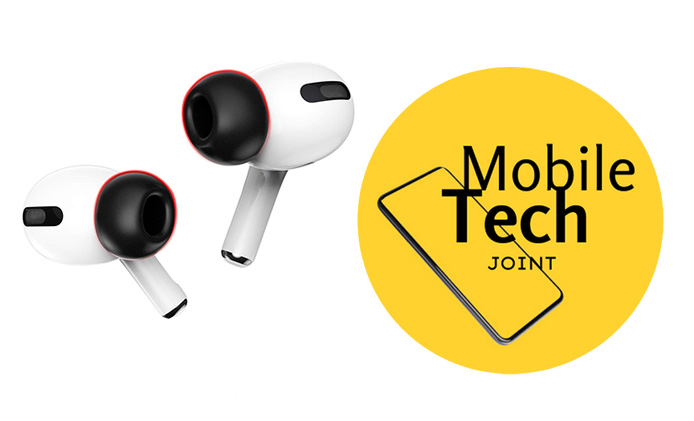Factory resetting AirPods is an essential skill for users, whether you’re troubleshooting issues or preparing to pass them on to someone else. This process restores your AirPods to their original settings, ensuring that any personal data is removed and that the devices can be paired anew. This guide will delve into the various methods for resetting AirPods, the reasons you might need to do so, and the implications of this action.

How to Factory Reset Your AirPods
Using the AirPods Case
- Step 1: Place both AirPods in the charging case: Ensure that your AirPods are properly seated in the case, with the lid closed. This allows them to connect to the case’s internal system, essential for initiating a reset.
- Step 2: Locate the setup button: The button is on the back of the charging case. Open the lid, then press and hold the button.
- Step 3: Watch for the status light: The status light will initially flash amber, then white, indicating that the AirPods have been reset. This process unpairs them from any connected devices and clears all user data.
Using an iOS Device
- Step 1: Connect to an iOS device: Ensure your AirPods are connected to your iPhone or iPad.
- Step 2: Navigate to Settings: Go to “Settings” > “Bluetooth” and locate your AirPods in the list of devices.
- Step 3: Forget the device: Tap the “i” icon next to your AirPods, then select “Forget This Device.” This action removes the AirPods from your iOS device’s memory.
- Step 4: Reset using the case: Follow the physical reset procedure using the button on the AirPods case.
Using a Mac
- Step 1: Connect AirPods to Mac: Open “System Preferences” and go to “Bluetooth.”
- Step 2: Remove AirPods: Right-click on your AirPods and choose “Remove.” This action disconnects them from the Mac.
- Step 3: Perform a reset: Use the setup button on the case, as described in the first method, to complete the factory reset.
Why Would I Need to Factory Reset My AirPods?
There are several reasons why a factory reset might be necessary:
- Troubleshooting Connectivity Issues: If your AirPods are experiencing connectivity problems, a factory reset can clear any temporary glitches or bugs. This step is particularly useful if your AirPods aren’t connecting to your devices or if you’re experiencing intermittent audio issues.
- Audio Problems: Sometimes, sound quality can degrade due to software issues. A factory reset can restore the default settings, potentially resolving any audio anomalies like one AirPod being quieter than the other or distorted sound.
- Preparing for Sale or Transfer: Before selling or giving away your AirPods, it’s crucial to factory reset them. This action ensures that all your personal information and paired device data are removed, preventing the new owner from accessing your settings or usage history.
- Pairing with a New Device: If you switch to a new device and encounter issues pairing your AirPods, a reset can simplify the connection process by removing old device data.
What Happens When You Factory Reset AirPods?
- Unpairing from Devices: The AirPods will disconnect from all previously connected devices. You’ll need to re-pair them with your iPhone, iPad, Mac, or other devices after the reset.
- Clearing Stored Data: All customizations, preferences, and settings will be erased. This includes any name changes, gesture controls, and other personalized settings.
- Restoring Default Settings: The AirPods revert to their original factory settings, which can help resolve any issues related to software or user configuration.
Is It Safe to Reset AirPods to Factory Settings?
Factory resetting your AirPods is entirely safe. This process is designed to clear all data and settings without causing any harm to the hardware. It’s a standard troubleshooting step recommended by Apple and is akin to rebooting a computer to resolve issues. Resetting doesn’t affect the firmware or damage the internal components, making it a risk-free procedure for restoring your AirPods to their original state.
Can I Undo a Factory Reset on AirPods?
Once you factory reset your AirPods, you cannot undo the action. The process is designed to be a complete wipe, similar to factory resetting a smartphone. However, after resetting, you can re-pair the AirPods with your devices and restore settings, provided you remember them. It’s important to note that a factory reset will not delete any firmware updates, as these are retained even after resetting.
Conclusion
Factory resetting AirPods can be a valuable tool for troubleshooting, preparing for a device transfer, or simply starting fresh. It’s a straightforward process that can resolve many common issues and ensure your device is functioning correctly. By following the steps outlined above, you can confidently reset your AirPods and restore them to optimal performance. Whether you’re facing connectivity problems, preparing to sell, or just want a clean slate, understanding how to factory reset your AirPods is an essential skill for any user.
Also Check:
- How to Clean Airpod Case: What’s the Best way to Clean your Airpod Case?
- Airpod Case Not Charging: Common Reasons Why Your AirPod Case May Not be Charging…
- Need Help Resetting Your AirPods? Here is how to Reset Airpods and Restore AirPods…
- How Long Do AirPods Last: What Is the Average Lifespan of AirPods?
- Best AirPods for Working Out: Which Apple AirPods is the Best for Working Out?
